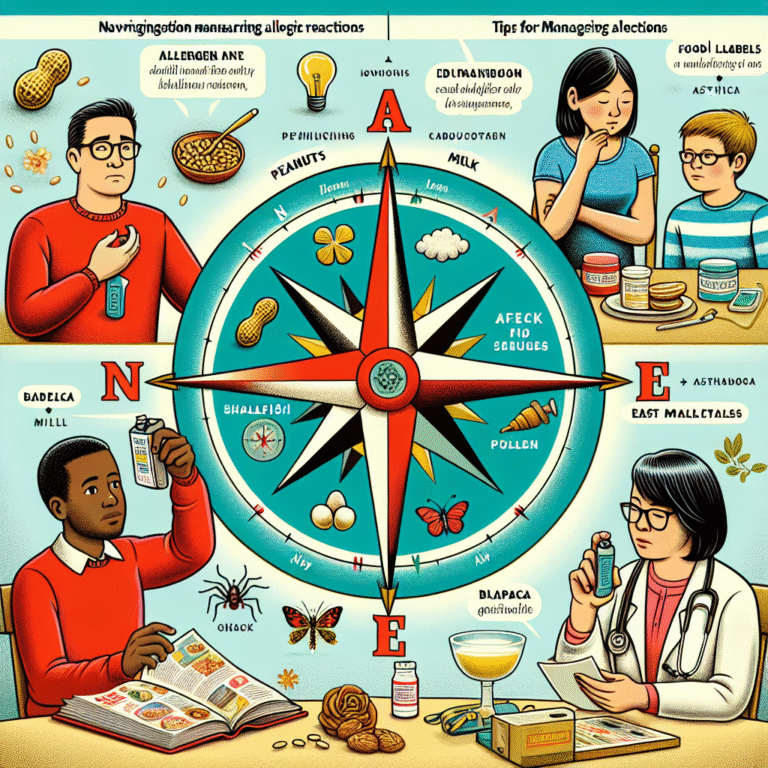
Introduction
When it comes to scientific research and experimentation, the difference between success and failure often hinges on meticulous design. One of the most critical elements in this design is the control group. Control groups are indispensable tools that allow researchers to draw meaningful conclusions from their findings. Understanding how these groups operate offers invaluable insights into not just the outcomes of experiments, but also the very nature of scientific inquiry itself. In this article, we embark on a journey exploring "From Theory to Practice: How Control Groups Shape Experiment Outcomes."
By delving into the mechanisms of control groups, relevant case studies, and practical applications, we aim to empower you with the knowledge needed to appreciate the nuances of this essential aspect of research.
The Role of Control Groups in Scientific Research
What are Control Groups?
At its core, a control group is a baseline against which researchers can compare the effects of a treatment or intervention. In an ideal experiment, a control group will not receive the treatment being tested, allowing researchers to isolate the effects of that treatment. This fundamental distinction enables scientists to assess the true impact of their experiments and to eliminate confounding variables that could skew results.
Importance in Various Fields
From psychology to medicine to marketing, the implementation of control groups is critical. For instance, in clinical trials, a group receiving a placebo is often juxtaposed with a group receiving the actual medication being tested. This comparison clarifies whether any observed effects are indeed due to the treatment and not some psychological or environmental factors.
Case Study: The Discovery of Insulin
One of the most iconic examples of a control group comes from the early 20th-century discovery of insulin. Researchers Frederick Banting and Charles Best undertook a series of experiments to isolate insulin from the pancreas. They conducted tests on diabetic dogs, some of which received insulin while the others were given no treatment at all.
Analysis: By utilizing control groups of dogs, Banting and Best were able to illustrate the profound effect insulin had on regulating blood sugar levels. The stark differences in outcomes between the treated and untreated groups led to breakthroughs that have saved millions of lives. This remarkable case exemplifies how the foundations of control groups can influence not just theoretical understandings but also real-world medical applications.
Designing Effective Control Groups
Randomization and Blinding
When it comes to designing control groups, randomization and blinding are key principles. Randomization helps ensure that both control and experimental groups are comparable, while blinding reduces bias. For example, in clinical trials, double-blind studies prevent both researchers and participants from knowing who belongs to which group, further ensuring that the data collected is reliable.
Sample Size Considerations
A common pitfall in experiment design is not having sufficient sample sizes for control groups. Too small a sample can lead to random chance affecting results, raising questions about the validity of conclusions. Statistical power analysis can help determine the necessary sample size required for meaningful results.
Table 1: Sample Size Requirements Based on Expected Effect Size
| Effect Size | Small | Medium | Large |
|---|---|---|---|
| Power (0.80) | 64 | 25 | 10 |
From Theory to Practice: Case Study in Education
In educational research, control groups play a pivotal role. Consider a study examining the effectiveness of a new teaching method. Schools that implement the method can be compared with a control group that continues with traditional teaching approaches.
Case Study: The "Project Follow Through" initiated in the 1960s sought to identify effective teaching methodologies. Students were divided into various groups based on instructional strategies, with some experiencing innovative methods while others adhered to conventional ones.
Analysis: The results dramatically demonstrated the effect the teaching methodology had on student performance. This empirical evidence was instrumental in shaping educational policy, showcasing precisely how control groups provide essential insights that transcend mere theory.
Limitations of Control Groups
While control groups are invaluable, they are not without limitations. For one, ethical concerns often arise, especially in fields like medicine. It would be unethical to withhold potentially life-saving treatments from patients, leading to debates about the use of placebo groups.
Practical Difficulties
In real-world settings, it can also be challenging to establish control groups that are genuinely comparable. Variability in participants’ backgrounds or external conditions can confound results, complicating the interpretation of outcomes.
Implementing Control Groups in Business Research
In business and marketing, the use of control groups can provide crucial data for decision-making. Take, for example, an A/B test for a new marketing strategy. One group receives the new promotion while the other does not serve as the control.
Case Study: A recent campaign by a major retail brand tested two separate email marketing strategies—one featuring a promotional discount and the other showcasing exclusive content aimed at customer retention. The control group received regular updates with no added features.
Analysis: The clear differences in customer engagement and sales allowed the company to ascertain which approach yielded higher returns on investment. This practical application of control groups not only optimized their marketing strategy but also solidified the decision-making process based on empirical data.
Beyond Control Groups: Advanced Techniques
Researchers often employ advanced techniques to complement control groups. Techniques such as covariance analysis or matched sampling are used to account for nuances and complexities that arise in real-world scenarios. These advanced methods help refine outcomes and bolster the reliability of findings.
Acknowledging Interaction Effects
When analyzing data, it is essential to recognize that interactions between variables can occur. For instance, the effectiveness of a treatment might differ based on age or gender. Awareness of these factors can guide researchers in better designing their control groups, ensuring that their findings are more reflective of the population as a whole.
Conclusion
From Theory to Practice: How Control Groups Shape Experiment Outcomes is not merely an academic concept; it is a foundational principle that impacts various fields. The careful selection, implementation, and analysis of control groups lay the groundwork for sound conclusions that foster true understanding. As we have explored through different case studies—from the life-saving properties of insulin to marketing strategies that drive business success—a well-structured control group consistently illuminates the truth hidden within data.
To harness the power of control groups in your own research or practice, consider the principles we’ve discussed—randomization, ethical considerations, and the acknowledgment of complexity. Armed with this knowledge, you have the opportunity to elevate your understanding and application of experimental research, paving the way for impactful discoveries.
FAQs
1. What is a control group?
A control group is a group in an experiment that does not receive the treatment being tested, serving as a baseline to compare against the experimental group.
2. Why are control groups important in research?
Control groups help isolate the effects of a treatment, ensuring that any differences observed are due to the treatment and not other variables.
3. How do you ensure a control group is comparable?
Randomization and blinding are key techniques used to ensure control groups are comparable to experimental groups.
4. Can ethical concerns affect the use of control groups?
Yes, particularly in medical research, ethical concerns may arise when withholding treatment from participants, leading to debates about placebo use.
5. What are advanced techniques to complement control groups?
Methods such as covariance analysis or matched sampling can be used to account for confounding variables in experiments, refining the reliability of findings.
This extensive exploration reveals the profound impact that control groups have on the outcomes of experiments across various fields. Embracing these learnings can bolster your research design and ensure that your conclusions are robust, validated, and actionable.

















